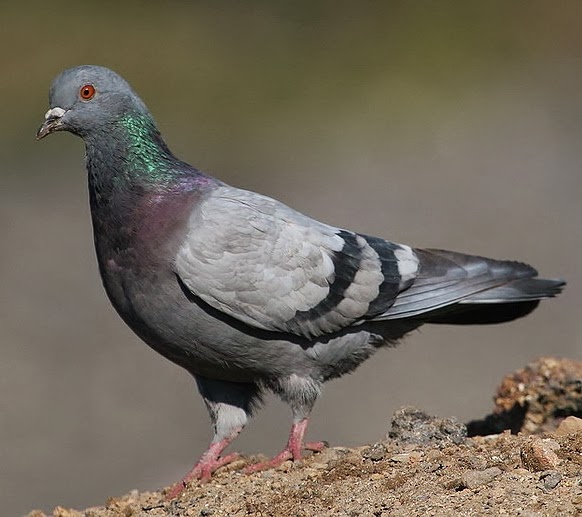 |
| Photo by Mustafa Sozen (Trek Nature) |
Common name:
rock pigeon (en); pombo-das-rochas (pt); pigeon biset (fr); paloma bravía (es); felsentaube (de)
Taxonomy:
Order Columbiformes
Family Columbidae
Range:
This species originates from western and southern Europe, North Africa, and south-western Asia as far east as India. Due to its domestic use and tremendous ability to thrive in human settlements, feral rock pigeon populations are now present in most cities throughout Europe, North America, central and southern Asia, south-eastern and south-western Australia, New Zealand, southern South America and in many areas of sub-Saharan Africa.
Size:
These birds are 29-37 cm long and have a wingspan of 62-72 cm. They weigh 240-380.
Habitat:
Wild rock pigeons are mostly found in cliffs and caves, most often near the coast, also using scrublands, second growths, pastures and arable land. Feral rock pigeons favour agricultural and urban areas. This species is present from sea level up to an altitude of 4.500 m.
Diet:
They feed on various seeds, namely domestic crops such as corn, oats and barley, and also small fruits such as cherries. They also eat garbage in urban areas.
Breeding:
Rock pigeons can breed all year round, but especially during spring and summer. They are monogamous and often mate for life. The nest is built by the male, consisting of a flimsy platform of straw and sticks, placed on a rocky ledge in a cliff face, or on a ledge in a building, often under cover. The female lays 2 white eggs, which are incubated by both parents for 17-19 days. The chicks are fed crop milk and seeds by both parents, fledging about 30 days after hatching. They reach sexual maturity at 5-6 months of age.
Conservation:
IUCN status – LC (Least Concern)
This species has an extremely large breeding range and a global population estimated at 260 million individuals. The population size is suspected to be decreasing owing to interbreeding with domestic pigeons.







